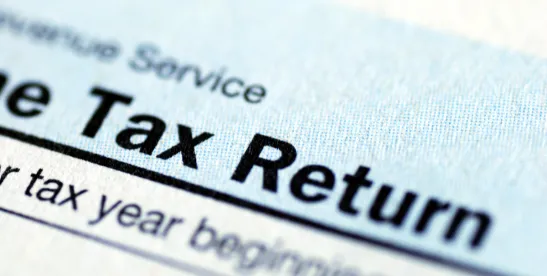In Grigsby v. United States,[1] the Justice Department used discovery procedures in federal district court essentially to audit a taxpayer’s federal income tax credits for research activities. The court found that the taxpayer was not entitled to the credits, the U.S. Court of Appeals for the Fifth Circuit affirmed, and the Supreme Court denied certiorari. This alert reviews the novel procedure used by the Government to recover the refund and the taxpayer’s arguments objecting to that procedure.
A research credit claim requires a careful analysis of the facts and an application of a complex statute[2] to those facts. Taxpayers are required to maintain detailed documents to substantiate the facts.[3] In an IRS audit of the credits, the taxpayer and the IRS have an extensive opportunity to discuss the issues that the research credit claim raises and attempt to resolve them. There are a number of procedures that the IRS created to assist in the resolution.[4] The IRS did not use these procedures in Grigsby. To the extent that the issues are not resolved, a taxpayer may file an administrative appeal with the IRS Independent Office of Appeals,[5] and if the taxpayer does not obtain relief administratively, the taxpayer may file a petition in the United States Tax Court.[6] Because the IRS did not use its customary procedures in Grigsby, the taxpayer had no opportunity to discuss resolution.
In Grigsby, the taxpayer filed an amended return for its 2013 taxable year claiming research credits and asked for a tax refund attributable to the credits. The IRS paid the refund without conducting an audit of the credits. Days before the general three-year statute of limitations expired to assess a tax deficiency,[7] the IRS assessed the taxpayer for the amount of the refund. The IRS took this action without first issuing of a notice of deficiency.[8] After the general three-year statute of limitations to assess a tax deficiency expired, the Internal Revenue Commissioner requested the Justice Department to bring an action in federal district court to recover the refund.
The Justice Department brought the action on the theory that the payment of the refund was “erroneous” and must be returned to the United States.[9] An erroneous refund action must be brought within two years of the refund.[10]
After losing in the Fifth Circuit, the taxpayer argued in its petition for certiorari that the court made two procedural errors: First, the Fifth Circuit misapplied the burden of evidentiary production in deciding the Justice Department’s motion for summary judgment. In a motion for summary judgment, the moving party must support its motion with competent evidence, and the nonmoving party then has the burden of producing competent evidence showing the court that a fact issue exists.[11] If a fact issue exists, the court must submit the issue to the trier of fact for resolution. In Grigsby, the taxpayer asked for a jury trial.
The question for the Fifth Circuit was whether the taxpayer’s documentation opposing the Justice Department’s motion presented a fact issue. The Justice Department argued that the taxpayer’s documentation did not show that the taxpayer’s activities constituted qualified research because (i) the activities were not intended to resolve design uncertainties, and (ii) in any event the taxpayer’s customers, rather than the taxpayer, “funded” the activities. The Fifth Circuit rejected the taxpayer’s evidence as competent and granted the Justice Department’s summary judgment motion.[12]
The taxpayer’s second argument in its certiorari petition was that the Fifth Circuit misallocated the burden of persuasion. The Fifth Circuit relied on the rule that a taxpayer has the burden of persuasion in a tax case. That rule applies in a case in which the IRS actually conducts an audit and issues a notice of deficiency to the taxpayer, which the taxpayer then litigates, or in a case in which the taxpayer files a refund claim that the IRS audits and disallows, which the taxpayer then litigates. But in Grigsby, the Justice Department initiated the suit without first issuing a notice of deficiency, and in such a case, the Government should be allocated the burden of persuasion.[13]
The court of appeals presumed that the letter the IRS sent to the taxpayer demanding a return of the refund was the Commissioner’s administrative action and entitled to be treated as presumptively correct, thus placing the burden on the taxpayer to overcome the presumption. But, argued the taxpayer, because the IRS had nothing in the record to support the demand letter,[14] the “naked,” assessment was wholly unlike a notice of proposed deficiency issued by the IRS following its audit of the taxpayer’s records, and should not have been presumed correct. Nonetheless, the Fifth Circuit granted the Justice Department’s motion for summary judgment, and the Supreme Court declined to review.
Concluding Thoughts: When the Justice Department filed its complaint, it apparently did not possess evidence that the refund was erroneous. The complaint merely restated the statutory requirements for the credits and denied that the taxpayer met them. Nonetheless, the Fifth Circuit allowed the Justice Department to cure this failing by conducting its “audit” in pretrial discovery in the trial court.
Moreover, the Fifth Circuit treated the Commissioner’s letter to the taxpayer demanding return of the refund with a presumption of correctness. This is really a novel characterization because, again, the Commissioner issued the letter without having conducted an audit of the taxpayer’s refund claim. Unstated in the opinions of both the trial and appellate courts is what prompted the Commissioner and the Justice Department to bring the erroneous refund suit. For the sake of good government, one hopes that the Commissioner really had evidence of an error when the Justice Department filed the complaint.
[1] 635 F. Supp. 467 (2022), aff’d, 86 F.4th 602, cert. denied, No. 24-40 (Oct. 7, 2024) (2024 WL 4427181).
[2] IRC 41.
[3] Treas. Reg. 1.41-4(d).
[4] For example, fast track settlement and fast track mediation. I.R.M. 4.10.7.5.6.
[5] IRC 7804(e)(3).
[6] IRC 6213(a).
[7] IRC 6501(a).
[8] There is no requirement for a deficiency notice where an assessment is made pursuant to the Commissioner’s general assessment authority provide in IRC 6201(a). Preble v. United States, 376 F.Supp. 1369, (D. Mass. 1974). Assessment is critical because no proceeding in court without assessment for the collection of tax may begin after the expiration of the period in which to assess the tax. IRC 6501(a). The taxpayer’s certiorari petition refers to an assessment without elaboration.
[9] IRC 7405(b).
[10] IRC 6532(b). The IRS paid the refund to the taxpayer on 9-15-17. The three-year statute of limitations period to assess a deficiency for tax year 2013 expired 10-15-17. Sometime between those two dates the IRS assessed the taxpayer for the amount of the refund, but did not attempt to collect the assessment administratively. Then, on 9-11-19, within two years of the payment of the refund, the Justice Department brought its erroneous refund suit against the taxpayer. See also https://natlawreview.com/article/high-profile-case-highlights-government-s-common-law-right-to-pursue-tax for another procedure the Government used to sue a taxpayer for an income tax deficiency without first issuing a notice of deficiency.
[11] Fed. R. Civ. P. 56(a).
[12] This alert does not discuss the substantive issues in the case. It is reasonable to think that the taxpayer engaged in qualified research by lending its design expertise to resolve complex construction project issues. It is a rare instance when plans and drawings anticipate all technological issues that a construction contractor of complex projects confronts. Miller Canfield discussed the “funding” issue in a prior alert. https://www.millercanfield.com/resources-IRS-No-One-Gets-Research-Credits.html.
[13] In an action to recover an erroneous refund brought pursuant to 26 U.S.C. § 7405, the government bears the burden of proof. United States v. Commercial National Bank, 874 F.2d 1165 (7th Cir. 1989), Soltermann v. United States, 272 F.2d 387 (9th Cir.1959); United States v. Wood, 79 F.2d 286 (3rd Cir.1935).
[14] That may well be why the Justice Department moved the trial court to defer action on the taxpayer’s motion to dismiss for failure to state a claim until the Justice Department conducted discovery to obtained documentation to support its summary judgment motion.





 />i
/>i

